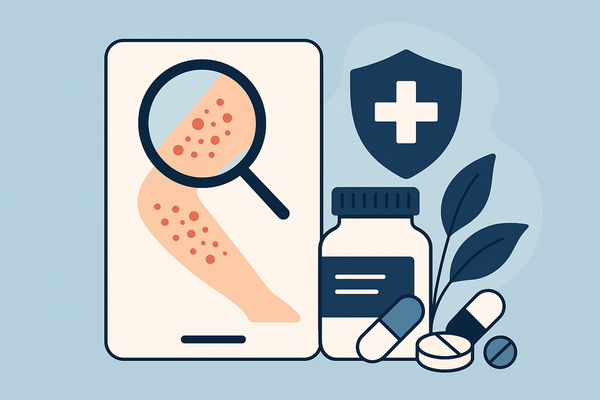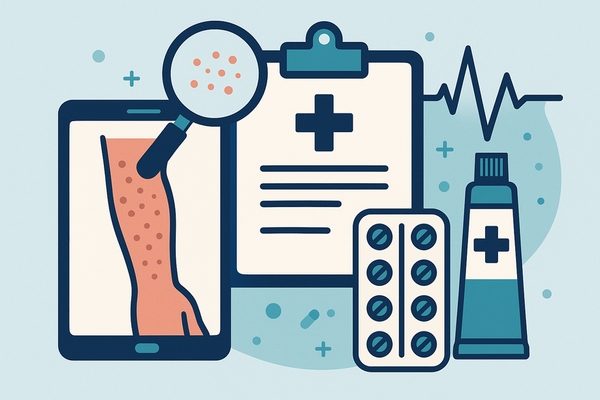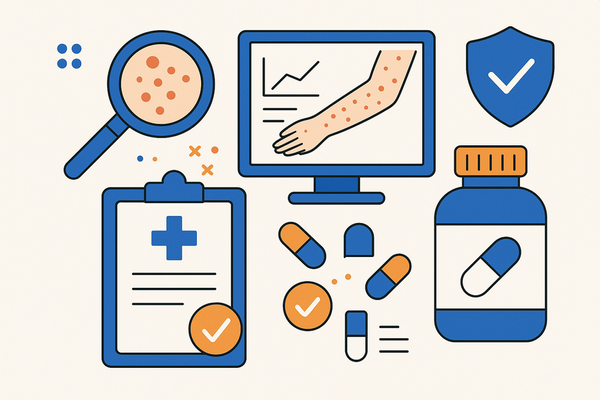Effective Medication Rash Treatment: A Comprehensive Guide
Explore effective medication rash treatment methods, from identifying symptoms to preventive strategies, ensuring comprehensive care for skin health.
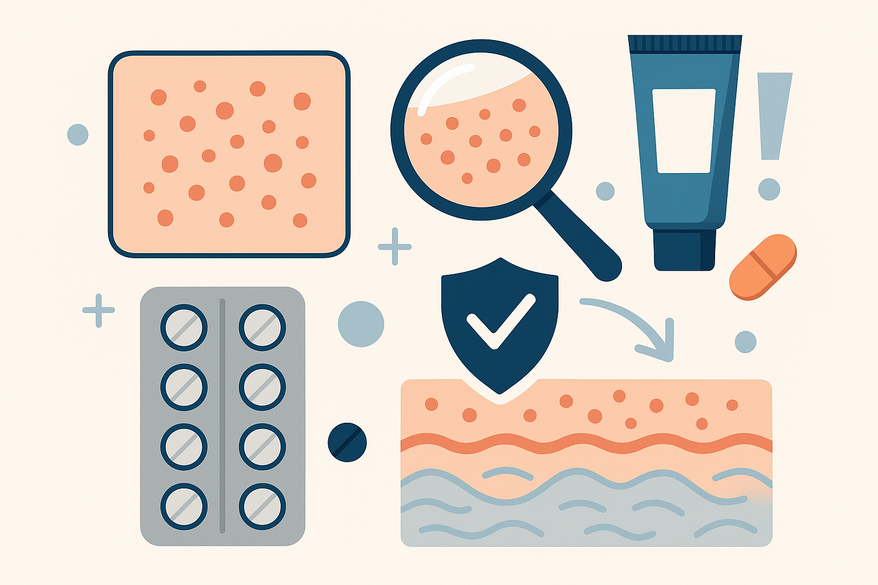
8 min read
Key Takeaways
- Early recognition of medication-induced rashes is crucial for timely intervention.
- Immediate steps include discontinuation of the offending drug under medical supervision.
- Core treatments involve antihistamines, corticosteroids, and supportive non-pharmacological measures.
- Red flags such as respiratory distress or widespread blistering demand urgent care.
- Preventive strategies—allergy disclosure, medical alerts, and regular follow-ups—reduce future risks.
Table of Contents
- 1. Understanding Medication-Induced Rashes
- 2. Signs and Symptoms to Watch For
- 3. Diagnosis: How to Identify a Rash
- 4. Treatment Options
- 5. When to Seek Professional Advice
- 6. Prevention and Management Tips
- 7. FAQ
1. Understanding Medication-Induced Rashes
What Is a Medication-Induced Rash?
A medication-induced rash is any visible skin reaction provoked by a pharmaceutical agent. These reactions may be:
- Allergic (immune-mediated) or non-allergic (toxic) in origin.
- A sign of an adverse drug reaction or a drug eruption.
- Variable in appearance, from mild hives to severe blistering.
Common Causes
Medication classes that commonly trigger skin reactions include:
- Antibiotics
- Penicillins (e.g., amoxicillin) – immune complex deposition.
- Sulfonamides (e.g., sulfamethoxazole) – T-cell activation by reactive metabolites.
- Anticonvulsants
- Phenytoin, carbamazepine – hypersensitivity via HLA allele activation.
- NSAIDs
- Ibuprofen, naproxen – inhibition of COX enzymes, releasing pro-inflammatory mediators.
- Other agents
- Allopurinol, antivirals – delayed T-cell-mediated reactions.
Understanding triggers supports targeted treatment. For more on identifying drug-induced rash symptoms.
Types of Rashes
- Morbilliform – measles-like red macules and papules.
- Urticaria (hives) – transient welts, intense itching.
- Fixed Drug Eruptions – recurring lesions at the same site.
- Severe Cutaneous Adverse Reactions (SCARs)
- Stevens-Johnson Syndrome (SJS)
- Toxic Epidermal Necrolysis (TEN)
- DRESS (Drug Reaction with Eosinophilia and Systemic Symptoms)
2. Signs and Symptoms to Watch For
Common Symptoms
- Redness and swelling (erythema, edema)
- Itching or pruritus
- Raised bumps, papules, or hives
- Dry, peeling, or blistering skin
Warning Signs Requiring Urgent Care
- Respiratory distress: wheezing, throat tightness
- Facial or tongue swelling (angioedema)
- High fever (above 100.4°F / 38°C)
- Rapidly spreading blisters or peeling skin
- Mucosal involvement (eyes, mouth, genitals)
- Systemic symptoms: dizziness, syncope, nausea/vomiting
3. Diagnosis: How to Identify a Rash
Initial Evaluation
- Medical history – note drug start dates versus rash onset and prior reactions.
- Medication review – list all current, recent, and over-the-counter drugs.
- Physical exam – assess rash morphology, pattern, and distribution.
Diagnostic Tests
- Allergy testing – skin prick or patch tests for specific drug allergens.
- Skin biopsy – histopathology in atypical or severe eruptions.
- Drug rechallenge – under strict supervision if benefit outweighs risk.
For comprehensive guidance on managing drug allergy rashes, visit our app.
Using Rash Detector, an AI Skin Analysis App that generates an instant sample report, you can get a quick, at-home evaluation:
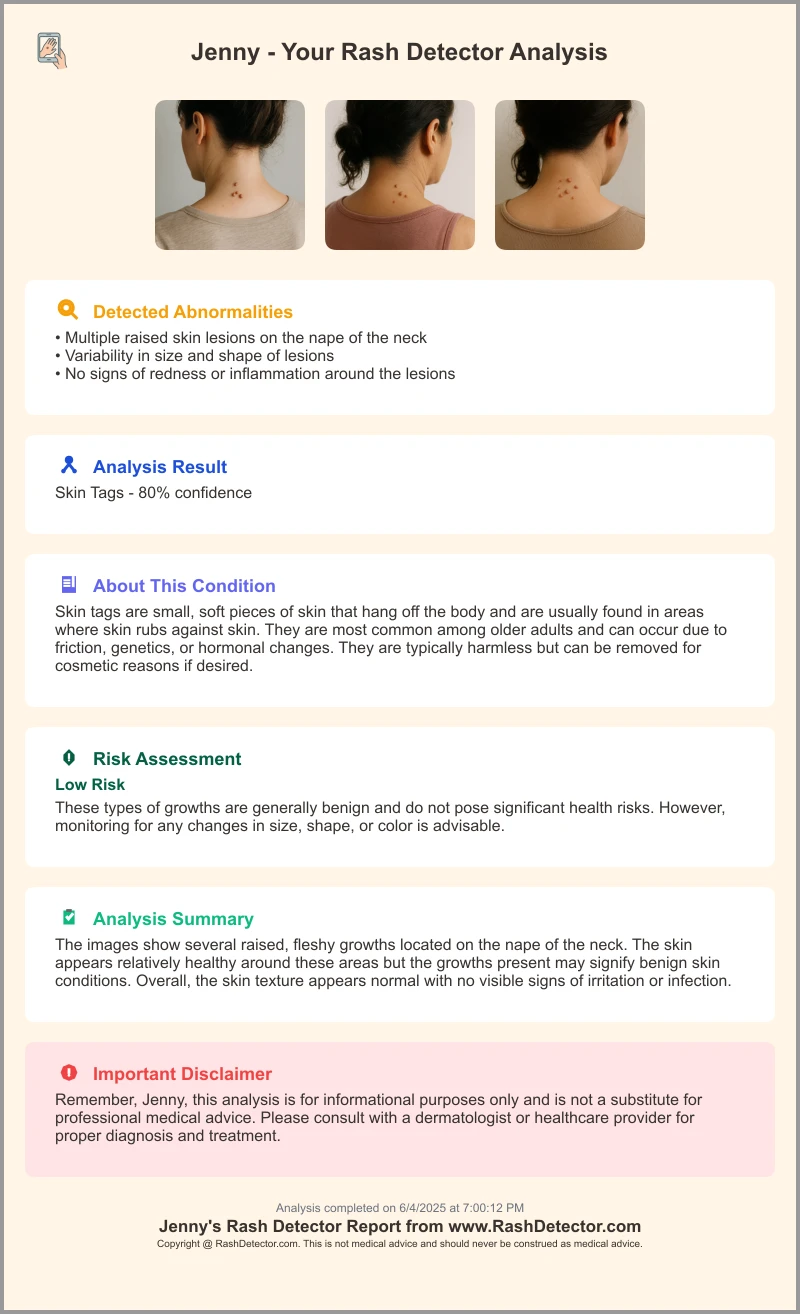
4. Treatment Options
Immediate Steps
- Discontinue the suspect drug under a doctor’s guidance.
- Never stop critical medications without professional advice.
Pharmacological Interventions
- Antihistamines – diphenhydramine, cetirizine to relieve itching.
- Topical corticosteroids – hydrocortisone 1% for mild inflammation.
- Systemic corticosteroids – oral prednisone or IV methylprednisolone for severe cases.
- Epinephrine auto-injector – immediate use in anaphylaxis, then activate EMS.
Non-Pharmacological Approaches
- Colloidal oatmeal baths to soothe pruritus.
- Fragrance-free moisturizers to repair the skin barrier.
- Loose, breathable cotton clothing to reduce friction.
- Cool compresses to ease inflammation.
- Adequate hydration to promote skin healing.
5. When to Seek Professional Advice
Red Flags for Immediate Care
- Rash plus high fever, mucosal lesions, or rapid spread.
- Signs of organ involvement (jaundice, nephritis).
- Features of DRESS syndrome: lymphadenopathy, eosinophilia.
Risks of Delayed Treatment
- Progression to Stevens-Johnson Syndrome or Toxic Epidermal Necrolysis.
- Secondary bacterial infections in open lesions.
- Organ damage, shock, or fatal outcomes.
6. Prevention and Management Tips
Prevention Strategies
- Disclose all drug allergies to providers and pharmacists.
- Wear a medical alert ID for severe past reactions.
- Review medication guides for side effects before starting new drugs.
- Discuss alternative therapies if you have known sensitivities.
Ongoing Management
- Maintain a log of all medications and any skin changes.
- Schedule regular follow-ups with a dermatologist or allergist.
- Educate on proper skincare routines and trigger avoidance.
- Know when to escalate care if new symptoms arise.
Effective medication rash treatment rests on early recognition, accurate diagnosis, and timely intervention. From discontinuing the trigger drug to using antihistamines, corticosteroids, or soothing oatmeal baths, each step plays a vital role. Preventing future reactions through clear communication, medical alerts, and regular follow-up empowers you to stay safe. If you or a loved one experiences a concerning rash, seek prompt medical evaluation. Have questions or personal tips? Share your experience in the comments to help our community navigate medication rash treatment together.
FAQ
- Can I continue taking my medication if I develop a rash?
Stop the suspect drug under medical supervision. Some rashes escalate quickly, so professional evaluation is essential for safe treatment. - What if the rash recurs on the same medication?
Report recurrence to your provider. An allergy work-up and alternative therapy may be needed to guide future treatment. - Are there long-term skin changes after a drug rash?
Severe reactions can leave hyperpigmentation, hypopigmentation, or scarring. Monitor healing and seek dermatology follow-up if changes persist.


